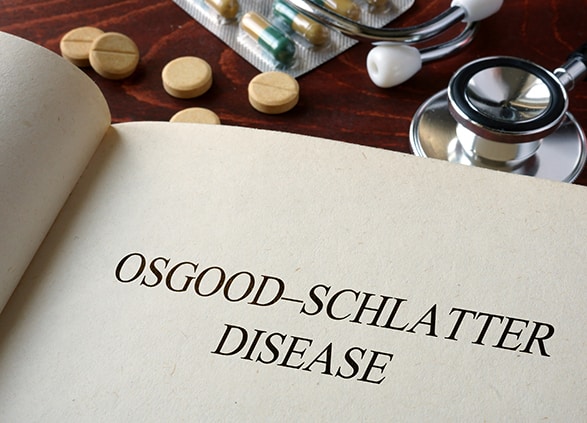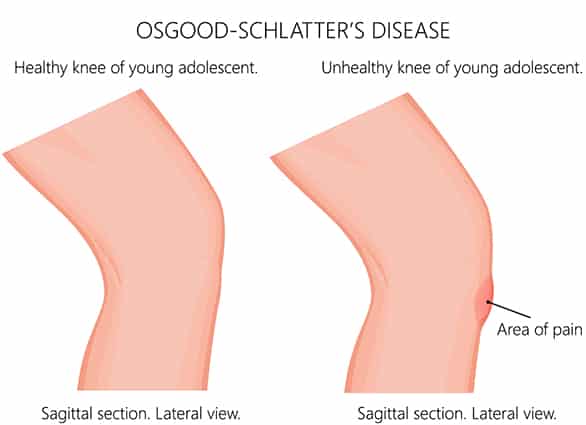
Common in children experiencing a rapid growth phase
Osgood Schlatter disease is a condition that causes knee pain in active children and adolescents.
It is caused by traction of the patella tendon on the growth plate at the top of the shin bone, resulting in growth plate inflammation and pain. It is common in children experiencing a rapid growth phase and who are active in high-impact sports like running, football or basketball. This condition usually affects sporty children between the ages of 10-15 and is more common in boys than girls.
Osgood Schlatter disease is named after two orthopaedic surgeons who first described the condition.
What causes Osgood-Schlatter disease?
Osgood Schlatter disease is caused by traction of the patella tendon on the adolescent growth plate at the top of the shin bone, resulting in growth plate inflammation and pain.
Several factors may contribute to the development of Osgood-Schlatter disease, including:
- Abnormal foot posture – this can cause excessive motion across the knee, placing more strain on the growth plate
- Muscle tightness or weakness – during a rapid growth phase the leg muscles can become tight, reducing the flexibility at the knee joint and increasing the tension on the growth plate
- Overuse – especially if your child is active in sports involving high impact activities like running or jumping
- Unsupportive or unstable footwear with poor shock absorption
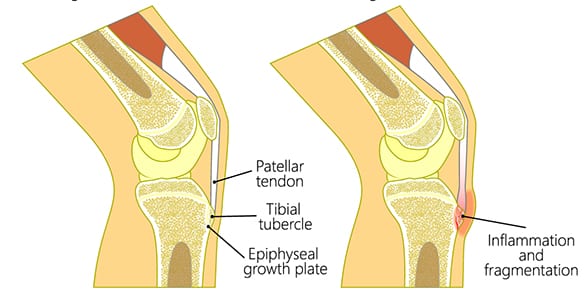

What are the symptoms of Osgood Schlatter Disease?
The most common symptoms of Osgood Schlatter disease include:
- Gradual onset of pain, and sometimes swelling, just below the knee-cap
- The pain is worse with running and jumping sports, climbing stairs and squatting
- Usually only one knee is affected, but it can sometimes affect both knees
How is Osgood Schlatter Disease diagnosed?
Your Podiatrist will take a comprehensive medical history and complete a physical examination and visual gait analysis. The assessment is likely to include:
- Pain provocation tests – to reproduce your knee pain
- Foot posture assessment
- Joint flexibility tests (or range of motion)
- Foot and leg muscle strength testing – looking for muscle imbalances and weakness
- Footwear assessment – looking for abnormal shoe wear patterns;
- Gait analysis and biomechanical assessment – to look for any abnormalities in the way the feet and legs move during gait.
- X-rays are not usually required
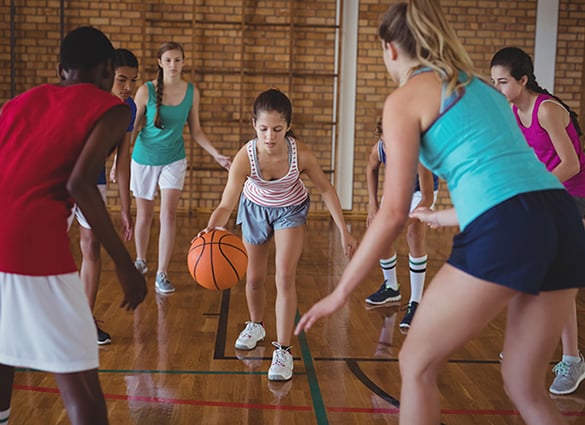
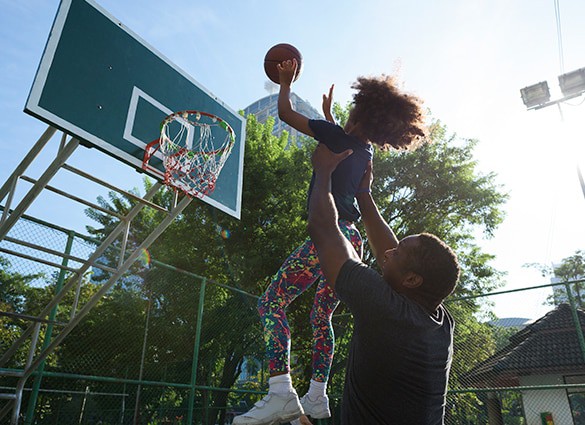
How is Osgood Schlatter disease treated?
Depending on the child’s individual contributing factors your Podiatrist may recommend these treatments options:
- Stretching exercises – to improve joint and muscle flexibility
- Custom orthotics – to address abnormal foot posture problems and reduce excessive motion across the knee joint
- Footwear changes – more supportive, stable footwear may be recommended
- Ice massage – to reduce local inflammation after sport or exercise
- Rest from aggravating activities until the inflammation is reduced
- Strengthening exercises – to address any foot or leg muscle imbalance or weakness.
If you require a hip stabilisation program a physiotherapy referral will be recommended.
What should I do if my child has Osgood Schlatter Disease?
If your child is experiencing knee pain, or you are concerned about their gait or foot posture, don’t hesitate to consult with our experienced paediatric podiatrists for a comprehensive walking assessment and professional advice.
